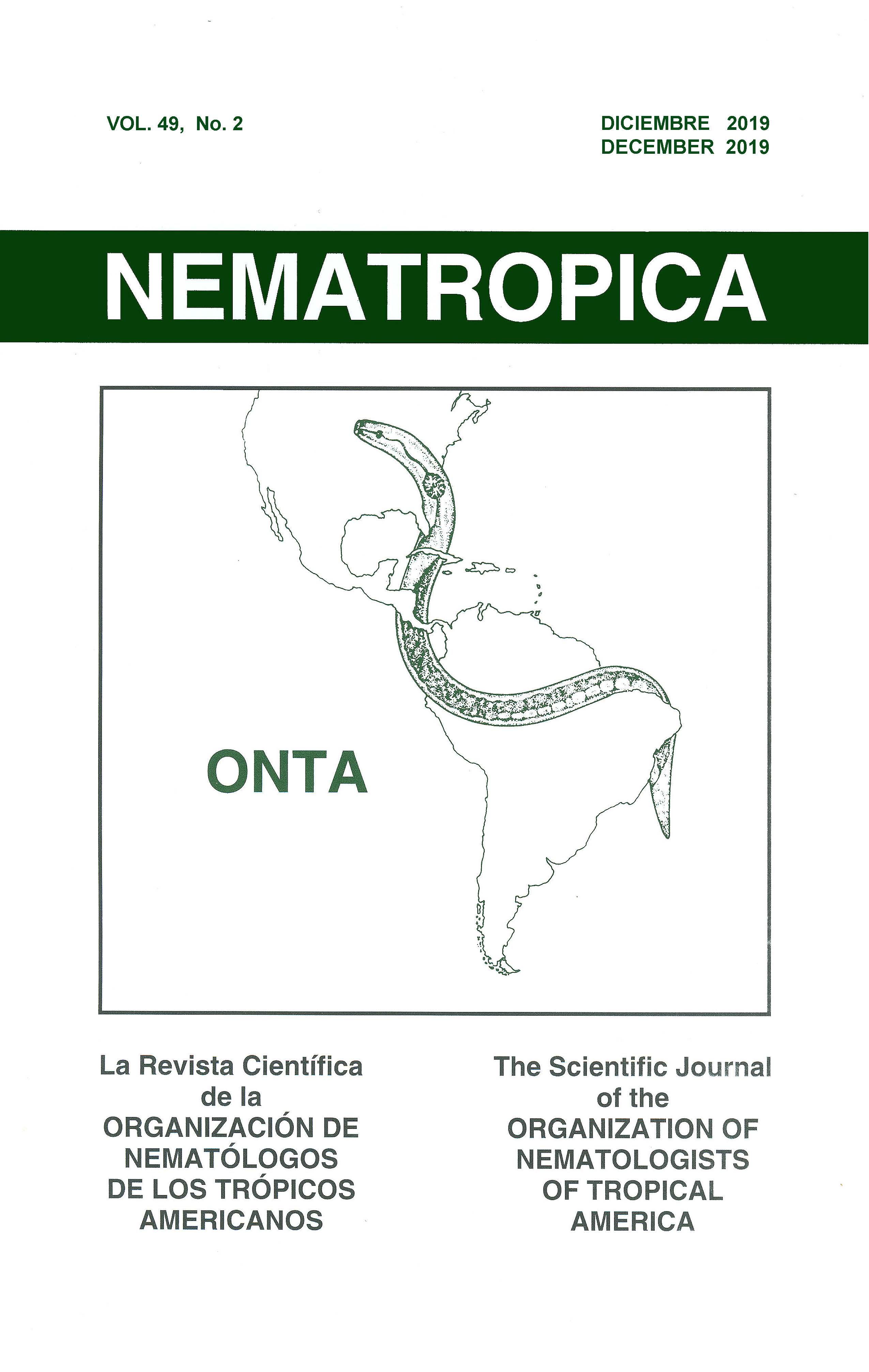POTENTIAL OF BIOFUMIGANT COVER CROPS AS OPEN-END TRAP CROPS AGAINST ROOT-KNOT AND RENIFORM NEMATODES
Abstract
Many Brassica cover crops have the capability to perform biofumigation against plant-parasitic nematodes, but some species or cultivars are highly susceptible to the nematodes, posing an important challenge for nematode management. Current research aims to exploit the ability of nematode-susceptible Brassicas as trap crops by terminating them before targeted nematodes undergo multiple life cycles; we refer to such trap crops as “open-end trap crops”. Meloidogyne incognita, M. javanica, and Rotylenchulus reniformis were targeted in this research. Brown mustard cv. Caliente 199 (Brassica juncea) and oil radish cv. Sodbuster (Raphanus sativus) have been selected based on greenhouse pot experiments where brown mustard was a good host of M. incognita and R. reniformis, whereas oil radish was a poor host of M. incognita though susceptible to R. reniformis. In a separate greenhouse trial, M. incognita required 283 degree-days (DD) to reach egg-laying females (ELF) on both brown mustard and oil radish, but only required 266 DD on tomato. Rotylenchulus reniformis required 333 DD on both brown mustard and oil radish but only required 291 DD on cowpea to reach ELF. To validate greenhouse experiment results, oil radish was grown and terminated at various ages in a field trial. Regardless of the age, oil radish did not suppress soil populations of Meloidogyne spp. and R. reniformis but root-gall index on pumpkin (Cucurbita moschata) was reduced in 14 or 28 days after planting compared to no-trap-crop control. Additionally, three field trials were conducted to determine the open-end trap crop potentials of brown mustard and oil radish against the target nematodes. Brown mustard suppressed soil populations of Meloidogyne spp. in two trials and R. reniformis in one trial, but oil radish did not suppress the target nematodes in all trials. These results suggested that the trap crop effect may not only depend on brown mustard or oil radish susceptibility but also depends on the specific nematode DD. This is the first demonstration of the advantage of growing nematode-susceptible cover crops with biofumigation properties against plant-parasitic nematodes.

